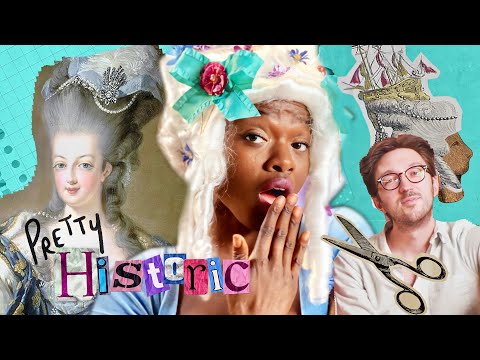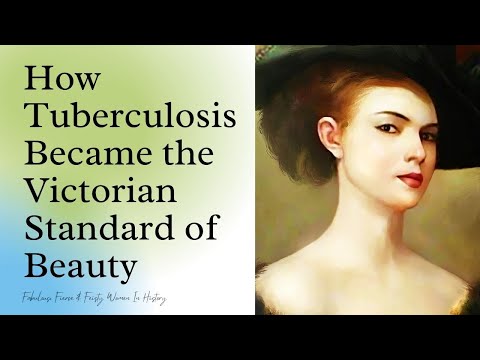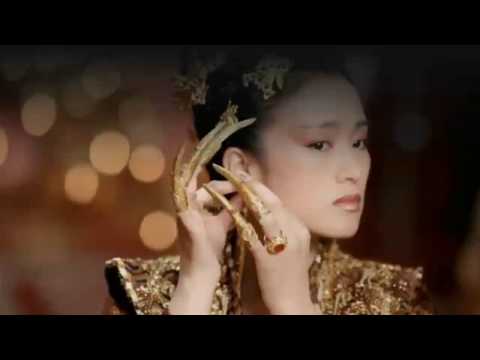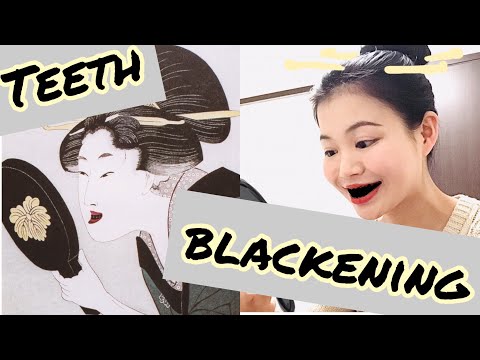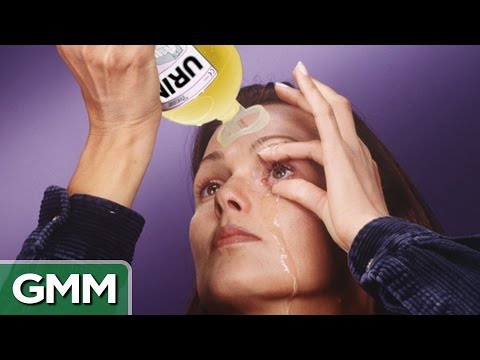Let’s take a look at some of the fascinating and odd things that people used to do to be considered more attractive by their society’s standards.
10 The Greek Unibrow
While early ’90s pop stars championed the “barely there” over-plucked brow, the ancient Greeks went crazy for the unibrow. A woman wasn’t considered attractive or of high status unless her shapely brows met in the middle of her forehead. Regarded as a symbol of purity and intelligence, the unibrow was the must-have look of the time. Watch this video on YouTube When you were lucky enough to already have a slight unibrow, you could rub soot onto the middle to enhance the area. If you weren’t so blessed with a natural monobrow, you could easily imitate the trend with a few simple tricks. Dedicated fashionistas would dye goat hair and stick it to the area with resin to emulate the desired brow.[1]
9 The Bulging Blue Veins of the French Pre-Revolution Era
In the strange, royal world of pre-revolution France, white skin was revered among rich people for a variety of racist and classist reasons. Marie Antoinette is a prime example of a royal who favored the ultra-white skin aesthetic. She and her upper-class friends would powder themselves white to appear even paler. Since deathly-pale skin often causes blue veins to stand out more, a fashion was born. Coloring in your veins with blue pencil to make them really pop! Watch this video on YouTube Bright blue veins and faux-white skin weren’t even the weirdest trends of the time. The higher the status, the higher your hair. If you didn’t have enough hair to have a hairstyle as tall as the height of your face, a huge, wobbling wig would do the job. You only have to look at a painting of Marie Antoinette or another of her Versaille entourage to see the over-the-top and frivolous style of royalty and gentry at the time. Their towering, lard-smeared wigs sit atop pinched, white faces. Bodies appear uncomfortably and unnaturally stuffed into ridiculous dresses that dwarf the figure inside them. [2]
8 The Prevalence of Codpieces in England
It wasn’t just women who subscribed to ridiculous fashion and beauty trends. For 500 years, the codpiece went in and out of style, in varying sizes, for high-status men in England and throughout Europe. The male fashion style during the 1400s comprised tight linen leggings and a tunic, which didn’t leave much to the imagination. Unsurprisingly, this tight pant style drew criticism from moralists and religious leaders at the time. Eventually, under Edward IV’s rule, men were ordered to cover their private parts, so the concept of the codpiece was born. They gradually evolved to symbolize both masculinity and power due to the armor-style protective function. Codpieces grew and grew to ridiculous proportions, offered in velvet, silk, and cotton, often heavily bejeweled and embroidered. Henry VIII’s codpiece can still be seen at the Tower of London![3]
7 Gladiator Sweat Face Cream and Aphrodisiac
If the idea of smearing someone else’s sweat all over you makes you retch, it’s probably best to stop reading now! The Ancient Romans did many strange things, and collecting and using gladiator sweat run-off was one of them. The general idea was that the better the gladiator fought in the arena, the more potent and powerful their bodily fluids. Women could buy little glass vials of the sweat to use as a face cream intended to improve their complexions. The gladiator’s sweaty grime was scraped off the men’s bodies with a special tool called a strigil. This was then mixed with olive oil to create a better consistency and used like a moisturizer all over the body. Men and women also believed the sweat and blood of gladiators to be a powerful aphrodisiac and often consumed it mixed with wine! Each to their own.[4]
6 The Tuberculosis Look of the Victorian Era
The Victorian era was a prime time for hazardous and horrible beauty fads. We’re all aware of the corset, the undergarment created in the 1800s, that was used for crushing a women’s figure into a more desirable form. High-status Victorian women and men liked the “tuberculosis look,” which inflicted you with pale skin, a fragile form, and red lips. Watch this video on YouTube Some fashion victims began to contract the horrible disease on purpose because the illness was said to enhance the natural beauty of a woman. Men were reported to have loved the sparkling, dilated eyes that the fever inflicted. The slow, gradual march toward death was romanticized, as was the thinning of women’s bodies as they progressed with the disease.[5]
5 The Extremely Long Nails of the Chinese Aristocracy
In Ancient China, many high-status people grew their nails long to symbolize their wealth and power. While it demonstrated that they didn’t need to do manual labor, it also may have originated from ideals that revered the importance of the physical body. Not wanting to harm or alter your physical form may have included the idea of keeping your nails intact by growing them long. Because nails were considered so precious by the rich, protecting them became paramount. During the Ming and Qing dynasties, specially adorned nail guards were used by upper-class women to protect and decorate their long nails. Jade and other precious stones were embedded in these long, sparkling nail accessories to add extra glitz.[6]
4 Baldness “Cures” of Ancient Egypt
It’s not only in recent times that some men have been reluctant to go bald gracefully. In Ancient Egypt, it was a well-known baldness remedy to mix lead, onions, iron oxide, honey, and animal fat to create a paste. This grim concoction was applied to hairless heads in the vain hope of re-stimulating hair growth. They were also known to blend down animal hooves and dog paws with date juice and leave that on the scalp. Needless to say, neither mixture worked, and they probably caused bad rashes and awful smells.[7]
3 Black-Dyed Teeth in Japan
Ohaguro was an ancient custom in Japan that involved blackening your teeth with a mixture of iron, vinegar, and tannins. One of the main reasons for this preference for black teeth was that pure black objects were regarded as extremely rare and beautiful. While it was usually a trend favored by rich, married women, it was also common to see geishas with jet-black dyed teeth. It symbolized maturity, status, and beauty. It was mainly practiced throughout the 1600s until the mid-1800s, when it was dropped in favor of natural pearly whites.[8]
2 The “Baby Look” of Medieval Times
Hair removal, and addition, is still a huge part of modern beauty obsessions, so it comes as no surprise that it was a common theme in recent history too. Plucked-off eyelashes and eyebrows were combined with shaved foreheads to give medieval women that weird baby alien look. Large foreheads were revered and considered extremely attractive by men. This odd trend included plucking away all of your facial hair and ensuring that your hairline was as far back as possible. Hairlessness was considered pure and innocent, creating a popular look that, by today’s standards, definitely wouldn’t be considered so beautiful. This prominent forehead and bald-faced ideal remained popular throughout the Renaissance period. It was even adopted by Queen Elizabeth I, who removed her own brows for the large-faced look. [10] [9]
1 Gargling with Portuguese Urine
Dental care has certainly been questionable throughout the ages. While nowadays there’s an obsession for too-white teeth, in Ancient Rome, they gargled with human urine! According to historians, the Romans used to import Portuguese pee to gargle and rinse their teeth with. They apparently believed the Portugueses’ stuff to be higher in potency than their own—who knows why! The ammonia in urine was used to disinfect the mouth and whiten teeth, which actually works, but it just sounds gross. It became such a popular part of their hygiene routine that Emperor Nero taxed the bottled urine trade, and it was a known mouthwash ingredient well into the 18th century.[10]

